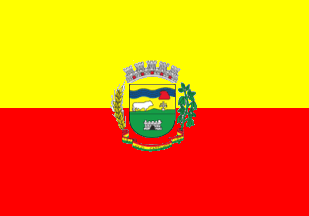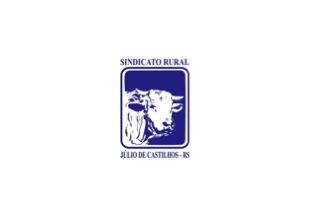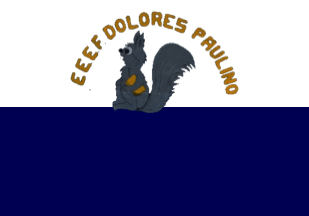 image by Ivan Sache, 19 July 2020
image by Ivan Sache, 19 July 2020 
Last modified: 2020-07-25 by ian macdonald
Keywords: rio grande do sul | júlio de castilhos |
Links: FOTW homepage |
search |
disclaimer and copyright |
write us |
mirrors
 image by Ivan Sache, 19 July 2020
image by Ivan Sache, 19 July 2020
The municipality of Júlio de Castilhos (20,032 inhabitants in 2016; 192,383 ha)
is located 350 km north-west of Porto Alegre. The municipality is composed of
the districts of Júlio de Castilhos (seat), Săo Jőao dos Mellos and Tręs
Mártires.
Júlio de Castilhos was settled in 1802 by André Pereira Garcia,
a colonist from the Azores, and Manuel Moreira Pais, a colonist from Paraná,
established in the north and south of the present-day's municipal territory,
respectively. Joăo Vieira de Alvarenga, from Curitiba, established between these
two domains the Boa Vista fazenda, located atop the Duransal hill, today the
center of the town. Tropeiros traveling from Cruz Alta to Saő Martinho used to
rest in Joăo Vieira's inn, conveniently located at mid-distance of the two
towns. The settlement became soon known as Joăo Vieira.
Following Joăo
Vieira's wish, the settlement was transformed in an organized village in 1870,
renamed to Povo Novo (New Settlement). Joăo's son, Manoel Vieira de Alvarenga
offered 42 ha to the Municipal Chamber of Săo Martinho.
The district of Vila
Rica was established in 1885, to be elevated to a municipality on 14 July 1891,
inaugurated on 7 September 1891. The municipality was renamed to Júlio de
Castilhos on 31 December 1904 and granted the rank of "cidade" in 1939.
The municipality's namesake and most famous son is the journalist and politician
Júlio de Castilhos (1860-1903).
A positivist republican, Júlio de Castilhos
was elected in 1891 at the Constituent Assembly, being one of the main authors
of the Constitution of Brazil. Elected President of Rio Grande do Sul on 15 July
1891, he was overthrown after the 13 November coup and re-elected in 1893. The
same year, he suppressed the Federalist Revolution led by Gaspar Silveira
Martins. His political system ("castilhismo") was deeply influential in
Rio Grande do Sul and Brazil for the next for decades.
http://www.juliodecastilhos.rs.gov.br/
Municipal website
Ivan Sache, 19 July 2020
Photos
http://www.alcir61.net/semana-farroupilha-em-julio-de-castilhos-foi-aberta-oficialmente/
https://www.facebook.com/imprensajcoficial/
https://www.facebook.com/imprensajcoficial/
https://www.facebook.com/imprensajcoficial/
https://www.facebook.com/imprensajcoficial/
https://www.facebook.com/imprensajcoficial/
https://www.facebook.com/imprensajcoficial/
The flag is sometimes used with the coat of arms inscribed in a white disk
Photos
https://www.facebook.com/imprensajcoficial/
https://www.facebook.com/imprensajcoficial/
Ivan Sache, 19 July 2020
 image by Ivan Sache, 19 July 2020
image by Ivan Sache, 19 July 2020
The flag of the Sindicato Rural Júlio de Castilhos is white with the union's
emblem, composed of a white bull on a blue background.
Photo
https://www.facebook.com/imprensajcoficial/photos/a.599718530123336/847700838658436/?type=3&theater
 image by Ivan Sache, 19 July 2020
image by Ivan Sache, 19 July 2020
The flag is also used with the union's complete logo, including
"SINDICATO RURAL" above the emblem and "JÚLIO DE CASTILHOS" beneath it.
Photo
https://www.facebook.com/sindicatorural.juliocastilhos/photos/a.583225248484588/583229961817450/?type=3&theater
A third version of the flag has the writing arranged
in an arched pattern instead of horizontally.
Photo
https://www.facebook.com/sindicatorural.juliocastilhos/photos/a.583225245151255/583234155150364/?type=3&theater
Ivan Sache, 19 July 2020
 image by Ivan Sache, 19 July 2020
image by Ivan Sache, 19 July 2020
The flag of E.E.E.F. Dolores Paulino is horizontally divided white-dark blue
with the school's emblem in the center. The emblem features a gray squirrel
holding a book.
Photos
https://www.facebook.com/imprensajcoficial/photos/a.599718530123336/941347372627115/?type=3&theater
Ivan Sache, 19 July 2020